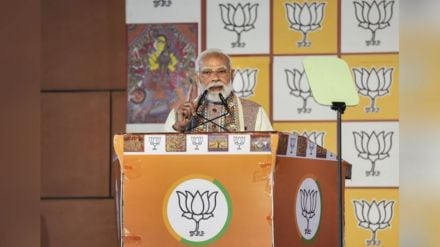The scale of the victory in the Bihar elections must have come as a real surprise to even the most optimistic in the National Democratic Alliance (NDA). The landslide victory underscores two clear messages from the electorate: one of continuity and one of expectation. Voters have signalled a preference for stability and for a government capable of action and implementation. Though both the NDA and the Mahagathbandhan offered freebies galore, Bihar’s electorate, specially women—Chief Minister Nitish Kumar’s core support base—cleverly figured out that a bird in hand is worth two in a bush.
The results can have some rub-off effect outside the state as well, as despite trailing other states on most economic indicators Bihar has an outsized influence in national politics with its 127 million people. The state accounts for 40 of the 543 seats in the Lok Sabha. As for personality clashes, Kumar, with Prime Minister Narendra Modi by his side, left Tejashwi Yadav, his one-time deputy in the state government, far behind on credibility, among other things. Yadav, after a decent showing five years ago, miserably failed to shake off his father’s legacy of “jungle raj”. On its part, the Congress has only added to its image of being a liability for its partners.
But now comes the hard part. Winning an election is only the first step; translating a mandate into meaningful outcomes is much harder amid the state’s tightening fiscal constraints that sharply limit its ability to deliver on expansive election promises. If the alliance can convert this mandate into real jobs, vibrant industries, and stronger institutions, Bihar can begin to shed its legacy of under-development. It’s obvious that the electorate has placed an urgent demand for economic uplift. Issues such as youth unemployment, under-employment, agrarian distress, and migration remain critical in Bihar’s socio-economic landscape.
This is not to say that Bihar, under Kumar, has not progressed. In fact, its performance in the last decade has been particularly noteworthy. In terms of the headline number, its growth rate has outstripped that of India as a whole in recent years. But that’s clearly not enough as broader numbers are stark. According to the NITI Aayog, at 33.76%, Bihar had the highest proportion of multidimensionally poor people in India in 2019-21. In terms of number of factories, the state had just 1.3% of all factories in the country in 2023-24. And of the total number of workers employed by industry, Bihar housed just 0.75%. These are troubling figures for India’s third-most populous state.
Bihar’s economy thus needs a new imagination. For decades, the state has lived with an economic paradox: a young population but limited opportunities, fertile land but modest industrialisation, strong political mobilisation but weak administrative capacity. Every election brings renewed promises of transformation, yet the structural problems persist. If Bihar is to break out of this cycle, the conversation must shift from short-term welfare to long-term economic architecture. Bihar needs a catalytic strategy involving manufacturing clusters, agro-processing, dairy value chains, renewable-energy enterprises, and the services sector. Agriculture and rural livelihoods remain central to Bihar’s economic landscape, but without a shift toward productivity-enhancing industries, unemployment will continue to overshadow growth. Bihar has shown political energy, social dynamism and a desire for change. What it now requires is economic progress. The next decade can be transformative—if leaders move beyond short-termism and think structurally.
